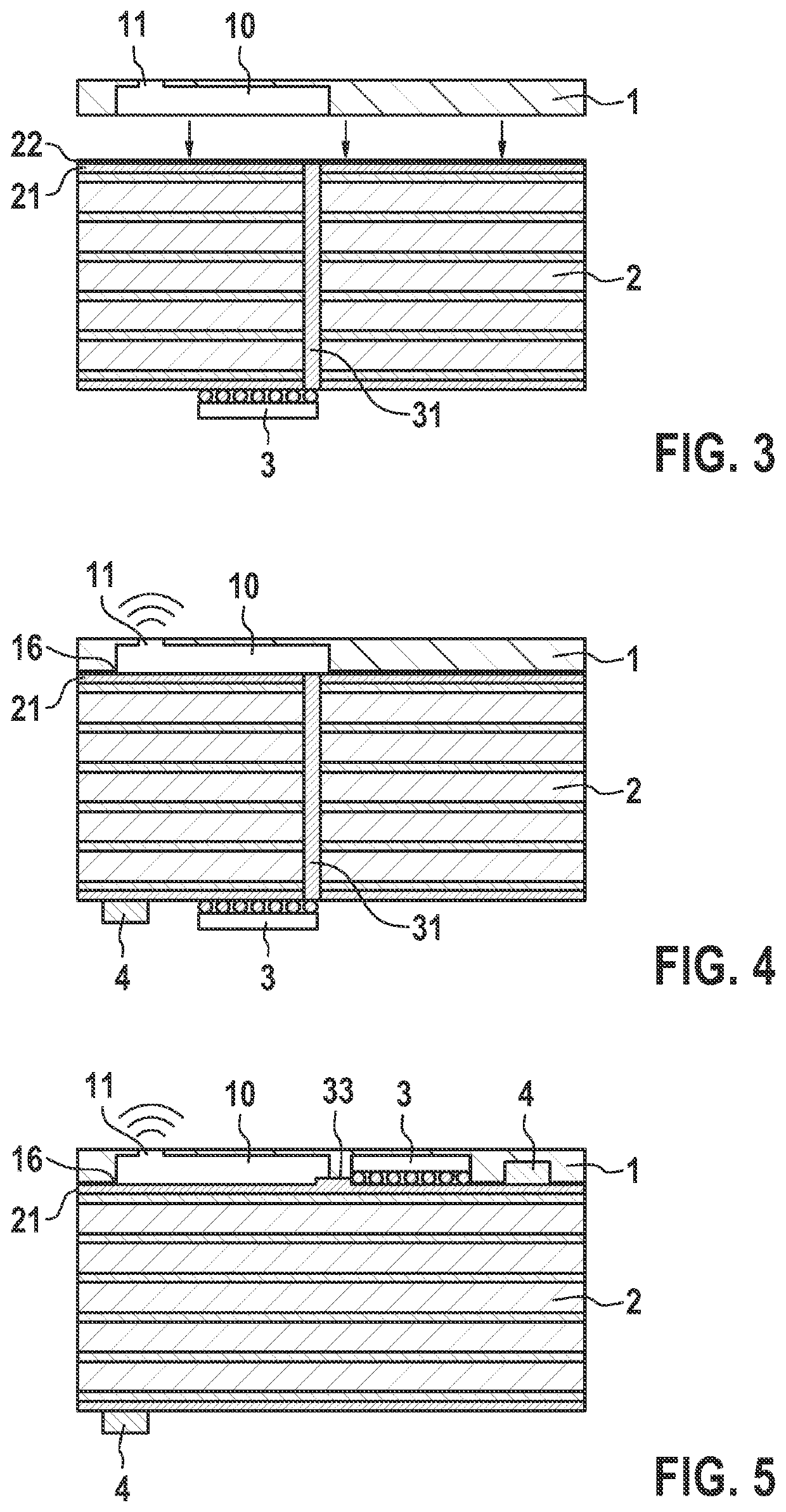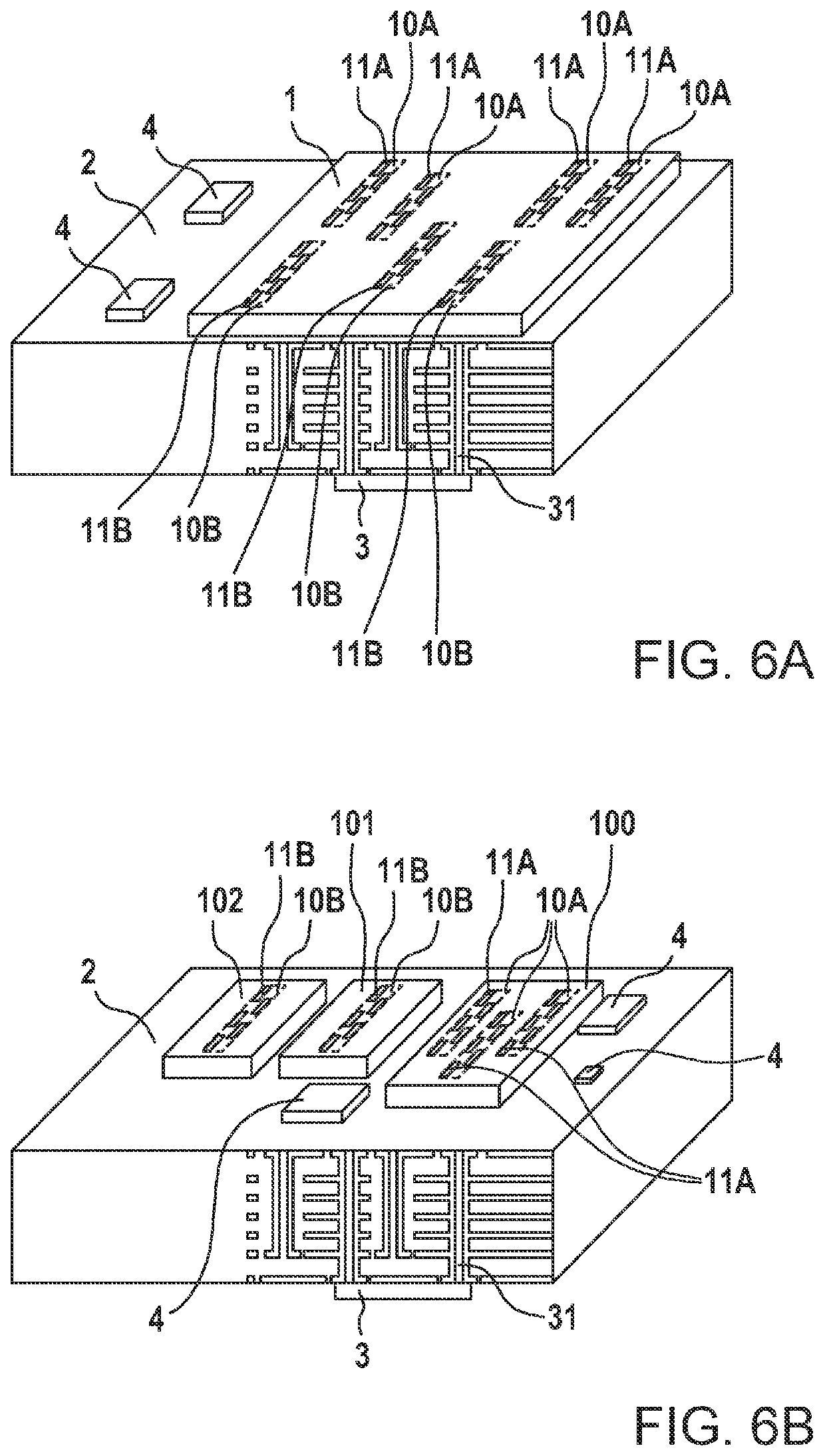Method for manufacturing a radar sensor
a radar sensor and manufacturing method technology, applied in the direction of instruments, waveguides, semiconductor/solid-state device details, etc., can solve the problem of surface tension in solder, and achieve the effect of compact radar sensor, reduced manufacturing costs, and high packing density
- Summary
- Abstract
- Description
- Claims
- Application Information
AI Technical Summary
Benefits of technology
Problems solved by technology
Method used
Image
Examples
Embodiment Construction
[0038]FIG. 1 shows a cut isometric view of a radar sensor according to one exemplary embodiment of the present invention. The radar sensor includes a waveguide structure 1 made of plastic, which is designed in the shape of a block, and a circuit board 2, which is made up of multiple layers (multi-layer circuit board) and was manufactured with the aid of standard FR4 technology. Waveguide structure 1 was connected to a surface of circuit board 2 (hereafter referred to as the upper side) using a soldering process, which is described in detail hereafter. Waveguide structure 1 includes multiple waveguide channels 10 having a rectangular cross-section, which together with the surface of circuit board 2 serve as waveguides for radar signals. In this way, an antenna structure for the radar sensor is formed. For a detailed description of waveguide channels 10, reference is made to the following description. Multiple slot-shaped openings are formed in waveguide structure 1, which connect wav...
PUM
 Login to View More
Login to View More Abstract
Description
Claims
Application Information
 Login to View More
Login to View More - R&D
- Intellectual Property
- Life Sciences
- Materials
- Tech Scout
- Unparalleled Data Quality
- Higher Quality Content
- 60% Fewer Hallucinations
Browse by: Latest US Patents, China's latest patents, Technical Efficacy Thesaurus, Application Domain, Technology Topic, Popular Technical Reports.
© 2025 PatSnap. All rights reserved.Legal|Privacy policy|Modern Slavery Act Transparency Statement|Sitemap|About US| Contact US: help@patsnap.com



